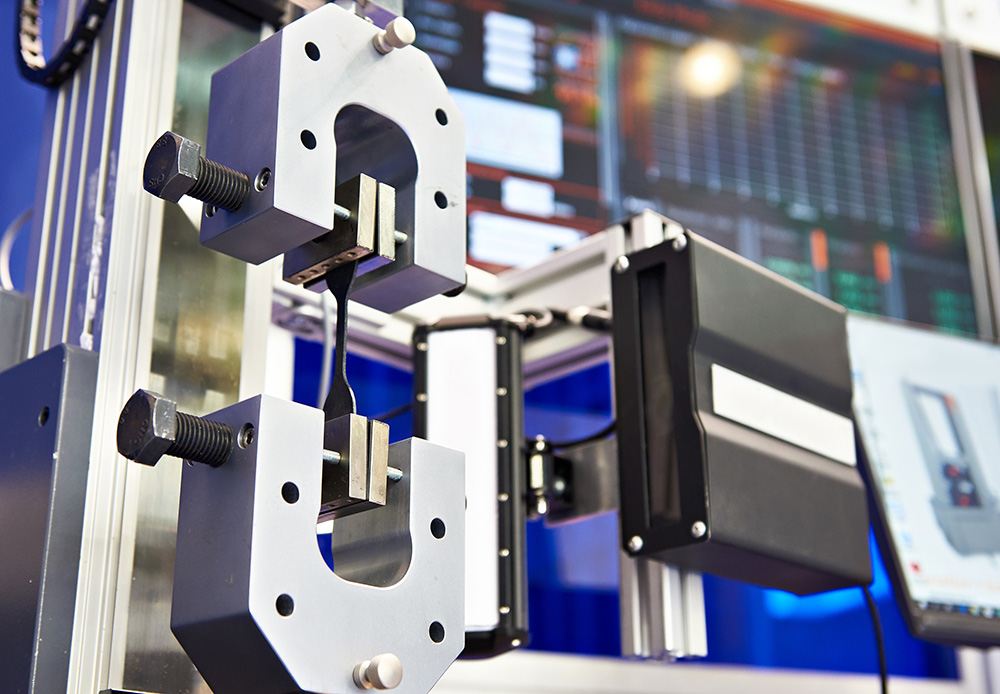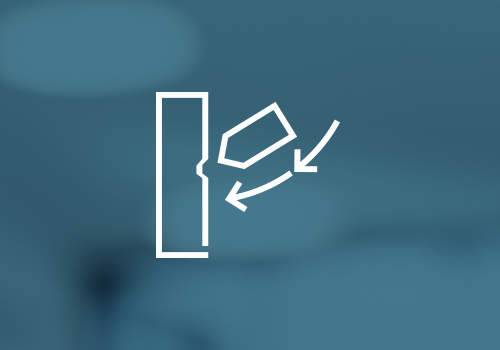

Mechanical testing is critical to evaluate the strength, resilience and behavior of materials under various forces. These tests play a central role in the development and quality assurance of products.
Various aspects such as tensile strength, flexural strength, hardness, impact strength and fatigue behavior are analyzed by these tests. Samples of the materials are loaded in controlled environments to measure the responses to compression, tension, bending or other forces. The data obtained makes it possible to select materials and ensure their suitability for specific applications.
Whether it is a matter of developing resilient structures, reliable products or safe vehicle components, our laboratory provides the basic information with mechanical materials testing to intensively test materials and thus ensure the quality and safety of products.
Browse through our services and order your tests directly online!
Cross-standardised measurement method in which two surface models are superimposed in order to record geometric deviations. These models are recorded between two different conditions, for example before and after a climate, sun simulation or vibration test for automotive test parts.
Test to ensure the resistance of the armrest to elbow loads as well as opening and closing under certain temperature and humidity conditions over the expected service life of the vehicle. This test includes climatised loads with a defined force to ensure the durability and longevity of the armrest under real conditions. Carried out with measuring robot Note: Body shell door must be supplied
Test to validate plastic parts in the interior area against breakage due to dynamic impacts at low temperatures. Note: Body must be provided by the client
Test to evaluate adhesive bonds against climatic environmental influences with high humidity. This test includes the ageing of the test specimens through changing temperature and humidity phases to ensure that the adhesive bonds retain their quality and adhesive strength under realistic conditions
Cross-standard measurement method for evaluating the visual appearance of the surface and quantifying colour deviations and gloss differences between different conditions, for example before and after a climate, sun simulation or vibration test. Repeatability Colour: 0.01 ΔE Repeatability Gloss 0-20: ± 0.1 GU
Determination of Charpy impact properties: Impact strength. Testing of an unnotched specimen. In this test, the specimen has no precut notches or grooves, and the impact force is applied to a smooth surface. This test method evaluates the general notched impact strength and toughness of the plastic without the presence of stress concentration points. Evaluate the resistance to a sudden impact or shock. The test results help in material selection, quality control, and ensuring the suitability of plastics for various applications.
Determination of Charpy impact properties: notched impact strength. Testing of a notched specimen. In this test, the specimen is prepared with a standardized V or U notch that creates a stress concentration point. Impact force is applied to the notched area, and the test measures the ability of the material to break and absorb energy at that specific point. Assessing resistance to sudden impact or shock. The test results are used as a basis in material selection, quality control and ensuring the suitability of plastics for various applications
Test for determining the bending properties of rigid and semi-rigid plastics. Test method according to the three-point bending method in which a specimen is subjected to a specific load in a controlled manner. By measuring the deflection of the specimen under the applied load, the bending properties can be determined. Used to evaluate the mechanical behaviour and structural integrity of plastics, as a basis for decision-making in material selection, quality control and ensuring the suitability of plastics for various load-bearing applications.
Determination of the tensile properties/tensile strength of plastics. During the test, samples of the plastic material are taken and subjected to a tensile force until they break. The tensile strength, elongation, modulus of elasticity and other parameters are measured to evaluate the behaviour of the plastic under load.
Determination of the strength and deformation properties of soft-elastic foams fixed, in which a test specimen is stretched at a constant rate until it breaks.
Test to evaluate the resistance of plastic parts in the lower area of the luggage compartment and interior to dynamic weight loads. The test is used to test the resistance of plastic components to loads that can occur during vehicle use. Carried out by means of a ball drop or ball roll testNote: Car body must be provided by the client
Test to evaluate the resistance of plastic parts of the floor mat to dynamic weight loads. This involves testing the resistance of plastic components to dynamic weight loads that can occur when entering and leaving the vehicle. The aim of this test is to ensure that the plastic parts of the floor mat can withstand the loads that occur during daily use of the vehicleNote: Car body must be provided by the client



